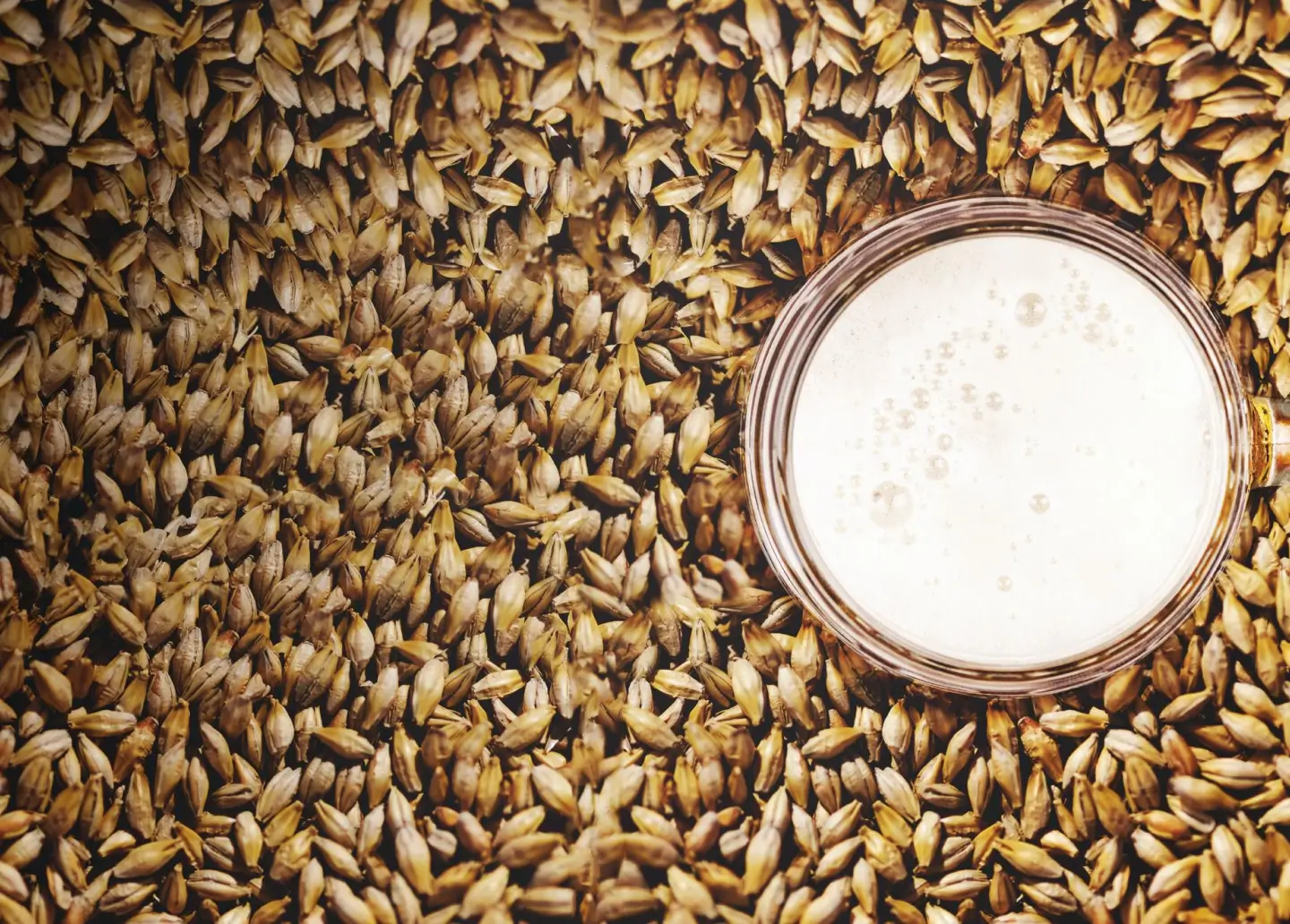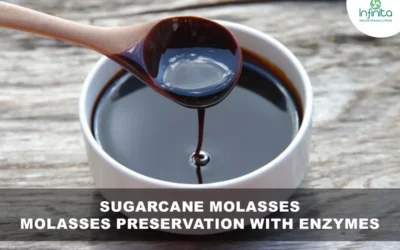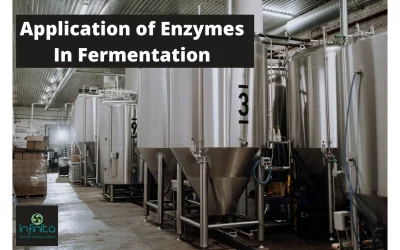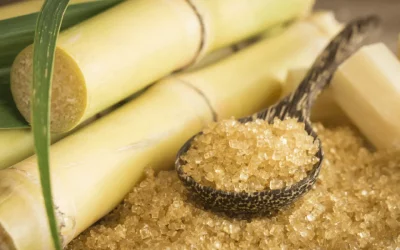Enzymes Used In Grain Based Distillery
A Distillery, in the broadest sense, is a place where spirits are manufactured, refined, distributed as per various industries requirements and ‘Grain-Based’ is a reference to the feedstock [raw material] used from which the spirit is extracted. While one may wander off in thoughts that a distillery is nothing but a liquor manufacturing unit that brings us our celebratory beverages-which is partly true-there is more to what a distillery does than what meets the eye.
The general audience may think of the word Alcohol and imagine a bottled liquor in their conceptual space but alcohol-based compounds come in all structural sizes and isomeric combinations and the only form of alcohol that is safe for consumption is Ethanol or Ethyl-Alcohol [C2H5OH] which is furthermore treated for an isomer with the exact amount of atoms of Carbon [C], Hydrogen [H] and Oxygen [O] i.e. 2,6 and 1 respectively and forms the isomer dubbed, Dimethyl Ether or Methoxy Methane [CH3OCH3] which is found often in extracted ethanol and finally diluted of course for ensuring both elimination of toxic impurities and ensuring consumption-safety. The purest form of ethanol is graded as Extra Neutral Alcohol [ENA] which is a colourless food-grade spirit that thrives at a benchmark of 96% purity and is used as the base ingredient in the production of alcoholic beverages, especially clear liquor like Vodka, Gin, Tequila, etc.
Other than that, ENA-grade ethanol has various industrial applications. It is used as a solvent for various chemical preparations and serves as a fundamental constituent in premium fragrance and perfume-brands, cosmetics, skincare products and also as considered as a better fuel alternative to gasoline. Some uses of ethanol also extend to the food industry where it is used as a base solvent for flavoured colourants, however, it is most commonly used in producing potable alcohol which purportedly accounts to about 90 per cent of the total ENA produced in India, considering the rising demand which was estimated to surge to 3000-3500 million litres in the year 2012. While the most common feedstock from which alcohol is derived for commercial use happens to be molasses [a dark viscous syrup which is a by-product of sugar extraction from sugar cane], extracting ENA-grade alcohol becomes difficult as molasses-based distillation results in a dark-brown extract which also releases a thick odour requiring the impure form of alcohol to be subject to various degrees of refining. This results in toxic effluents that have high Biochemical Oxygen Demand [BOD] and Chemical Oxygen Demand [COD] i.e. the unit for measuring the amount of dissolved oxygen needed for breaking down organic material in waste-water before it is disposed off as sewage, high BOD/COD makes them very difficult to treat for ensuring safe disposal as it ultimately ends up in our ocean waters. Moreover, molasses-based extraction is not the most economical alcohol manufacturing process which is a remark also based on the fact that its base-product i.e. sugarcane is only available for about 160 days a year taking into account the seasons conducive for its cultivation. Thus, distillers and manufacturers turn to other feedstock alternatives like malt[grain-based], apple, grape, potato, etc for meeting the overall demand of consumers.
Ethanol is loosely known as grain alcohol in common terms as it is prime alcohol that is procured from grain fermentation. The alcohol produced by grain-based feedstock is dubbed as ‘White Spirit’ which is a higher quality of alcohol and can be processed easily into ENA-grade ethanol thus is expensive to buy but is relatively cheaper and more economical to produce than molasses. Plus, the benefits of grain-based produce, especially corn and sorghum result in a by-product called Distillers Dry Grain with Soluble’s [DDGS] which is known for its high-protein constituent for cattle-based animals and sells as feedstock for farming and milching animals.
What And Why Are Enzymes Used In Grain-Based Distillery?
Before we answer the “What,” let us first understand why enzymes are used in any forms of ethanol distillation processes. Frankly speaking, fermentation is a long process and mankind no longer believes in waiting and the demand from various industries viz medicines, pharmaceuticals, energy, liquor [which is the highest,] is on the rise and needs to be met. So, in order to facilitate the fermentation process, the earlier methods of alcohol extraction involved introducing chemicals into the feed-stock for helping it rot faster, however, the extract would be defiled by the same chemicals which would require the alcohol extract to be treated. By now it is pretty clear that there is no going around fermentation, one has to wait it out and let the microbes do their jobs, however, what we can do is help speed up the process by paving things out for the microbes which enables complete fermentation of grains and a higher rate of ethanol production. Here’s how:
Alcohol production is a biological fermentation process that occurs due to microbial activity, in grain-based distillery, yeast [microbial fungi] which is responsible for converting simple sugar [glucose] into alcohol and Carbon-dioxide [CO2]. Sounds simple? So what makes the process so long?
When the grain-based feedstock is introduced for fermentation it is composed of starch, otherwise known as complex sugar which is a long, dense and clustered chain of glucose that needs to be broken into simple glucose molecules for the microbes to convert into alcohol. Microbes rely on natural degradation and decomposition for breaking down starch, which is a slow process. Enzymes like alpha-amylases, glucoamylase, proteases act as catalysts in the two phases of fermentation process viz Starch Liquefaction and Starch Saccharification, resulting in quality-output of non-contaminated white spirit at a faster rate and in larger quantities.
Alpha Amylases
Alpha amylases are used for breaking down starch into shorter chains of glucose called dextrins. However, before the enzyme can act-up on the starch it has to be heated to 150°C, a process also known as gelatinisation. With pressure-cooking methods, the starch can be gelatinised at lower temperatures ranging from 60°C to 95°C after which the alpha amylases are good to go. This entire process is called Starch Liquefaction and is the first phase of fermentation.
Glucoamylase
After the complex starch chains are broken down into shorter dextrins another enzyme facilitates the second phase Starch Saccharification, which is the complete degradation of starch into simple sugars like glucose. Glucoamylase attacks the starch molecules and dextrins and is known for completely degrading complex sugars into fermentable glucose which are simultaneously converted into alcohol by yeast which concludes the fermentation process.
Proteases
The levels of ethanol concentration in the production process entirely depend on the range of fermentation of grains. Some grains are known to be low on soluble nitrogen which inhibits yeast growth and results in longer fermentation time or lower production of alcohol. Adding a subsequent amount of proteases helps in breaking down complex nitrogenous molecules into a digestible protein that exhibits growth in yeast and reduces fermentation time.
Generically speaking, enzyme introduction into alcohol distillation was traditionally done by adding malt to the feedstock. Today our advancement in enzymatic science enables us to move past practices of the old while also enabling us to simply skip all the hazardous chemicals previously involved in ethanol production as we proactively promote an eco-friendly approach for speeding up the process. Many countries and prominent industry players have switched to enzymes, as unlike malt enzymes are needed in a relatively tiny ratio which means smaller quantities of enzymes can replace huge stockpiles of malt. This makes handling and warehousing economical while reducing raw material costs by 30 per cent.





